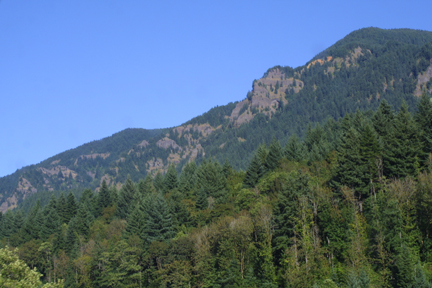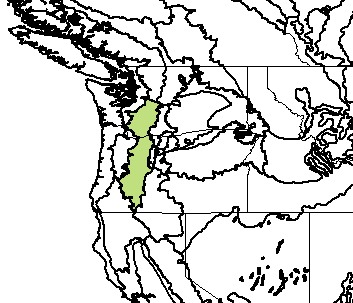
Mountain slope, Columbia River valley, Oregon
Bioimages home (click on an image to enlarge)
view
this page in its intended navigation context
Central and Southern Cascades forests
(WWF
ecoregion NA0508)

Mountain slope, Columbia River valley, Oregon

Source of bioregions data:
Olson, D. M. and
E. Dinerstein. The Global 200: Priority ecoregions for global conservation. (PDF
file) Annals of the Missouri Botanical Garden 89:125-126.
Distinctiveness (1=highest,4=lowest): 3 (bioregionally
important)
The ecoregion has in intermediate level of biodiversity for a temperate
coniferous forest, with a high level of endemic amphibians.*
Conservation Status (1=most endangered, 5=most
intact): 3 (vulnerable)
Extensive logging, road building and hydroelectric development have fragmented
the habitat. Fire suppression and the development of tree plantations have
further decreased the quality of habitats in the region.*
 | Tsuga heterophylla | (western hemlock) |
 | Thuja plicata | (western red cedar) |
Associated habitats

treeline,
on the slope of Mt. Ranier, Washington with Mt. Adams in the distancea
(c)
2005 James H.
Bassett hires




river bluffs, Columbia River valley, Oregon
(right: Multnomah Falls)
(c) 2005 Steven J. Baskauf
hires
hires hires hires


forest opening, Hoodoo area, Oregon
(c) 2005 Daniel P.
Duran hires
hires
* Ricketts, T.H., E. Dinerstein, D.M. Olson, C.J. Loucks, et al. (1999) Terrestrial Ecoregions of North America: A Conservation Assessment. World Wildlife Fund - United States and Canada. Island Press, Washington, D.C. pp. 222-224.
Except as noted, images copyright 2002-2005 Steve Baskauf - Terms of use